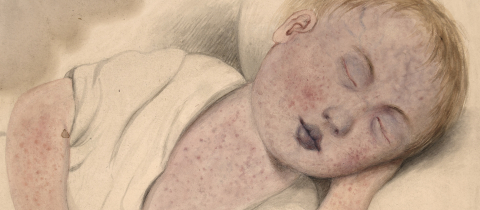Although warm foods are not likely to cause the production of yellow bile and hot winds are unlikely to be the cause of your digestive issues, Greek physician Galen of Pergamum contributed significantly to our understanding of the human body and left a lasting mark on the practice of medicine. He played a strong role in establishing the experimental method in the medical field.
Galen was born in 129 CE in Pergamum, Greece. He was initially educated as a philosopher, however, at the age of 16, he began his training as a physician. Galen’s medical career was one for the books as he studied at one of the most prestigious schools at the time in Alexandria and went on to treat gladiators and even served Roman emperors. However, his achievements extended beyond the treatment of patients; he made a substantial impact on medical advances in the fields of anatomy, physiology, pharmacology, and neurology. He published a collection of over 600 written works pertaining to medical practice! Among these were The Function of the Parts of the Body and The Doctrines of Hippocrates and Plato. While many of the medical facts proclaimed by Galen have been debunked, his conceptual contribution and experimental approach greatly influenced and continue to influence the medical field!
One of the most critical influences from Galen was his strong belief that our understanding be founded on observations and objective evidence derived from experiments. In this way, he encouraged a more empirical approach to medicine which established a more objective basis of observation and understanding. Through his objective approach, Galen advocated for anatomy to serve as the foundation of medical knowledge. Therefore, he dissected animals with the intent of understanding how the body works. Among his observations were his distinction of seven of the twelve pairs of cranial nerves, the characterization of the heart valves, the notion that blood vessels carry blood -not air –, and the structural differences between veins and arteries. His anatomical and physiological findings started to be challenged in the 17th century when it was evident that the anatomy of the animals dissected by Galen differed from human anatomy. Galen never carried out human dissections which were banned in ancient Rome. Other medical achievements include his use of measuring the pulse as a sign of illness, improving pharmaceutical science, and developing a better understanding of the physiological roles of several organ systems.
While much of the anatomical and physiological theories proposed by Galen have since been revised and updated, his mark on medicine remains. Some may argue that one of Galen’s greatest contributions was not the “facts” he published on the complexities of the human body, but rather his methodology and approach to understanding scientific phenomena. Galen was a strong advocate for empirical research and emphasized the importance of drawing conclusions from observations rather than from theories. These beliefs are reflected by his philosophical perspective whereby he was a strong believer in the theory of demonstration. In this manner, he tied the philosophical domains with the scientific and medical in an attempt to arrive at the most reasonable conclusions. He ultimately helped spark an understanding of the human body that is rooted in evidence.
Daniela is a fourth-year (U3) Physiology student. She is very passionate about understanding the human body and how we can all individually adapt our daily lifestyles to improve its functioning.







